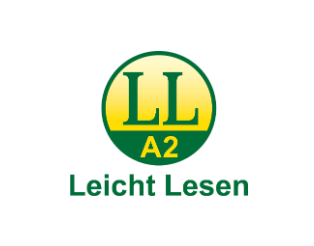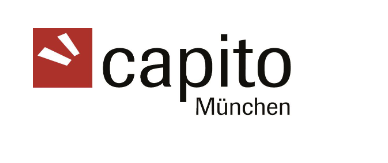Information in easy-to-read
On this website, you will find information about:
• The museum itself
– Die Neue Sammlung
– Exhibitions
– The story of the museum
– About the museum building
• Opening hours
• Entrance fees
• Barrier-free offers
What is Die Neue Sammlung?
Die Neue Sammlung is the Design Museum
in the city of Munich.
Design means to shape or to compose something,
for example a chair you use every day.
Design also means applied art.
Applied art focuses on the design of everyday objects.
Die Neue Sammlung is one of the most important and
oldest design museums in the world.
What is in the museum?
Die Neue Sammlung has more than 120 thousand objects.
Objects are the things you can see in an exhibition.
The museum owns lots of objects from the last 150 years.
The museum collects objects out
of 20 different types of design, for example:
• Industry
Industry produces things you find around the house
or use every day.
For example: washing machines, furniture or cars.
• graphic
For example: books, posters or boxes that you buy
things in.
• computers
For example: computers save information.
• mobility
This means: to get from one place to another
by public transport.
• other areas are:
ceramics, metal, glass, clothes and jewellery.
When did the museum start?
The museum started in 1903.
At that time, the museum for Applied Art
was called:
Münchner Vereinigung für angewandte Kunst.
In 1911, it was called: Münchner Bund.
The collecting of design objects started in 1912.
It was called: The Modern Model Collection.
Modern design objects were shown in this collection.
1925 was the start of:
Die Neue Sammlung – The Design Museum.
One year later, the museum opened in Prinz-Regenten-Straße.
Where is the museum now?
Since 2002, Die Neue Sammlung – The Design Museum
has been on show at the Pinakothek der Moderne.
A Pinakothek is a large museum.
The Pinakothek der Moderne is 4 museums made into 1:
• art
• architecture
• graphics
• design
The Pinakothek der Moderne is in the Kunst-Areal
in the Maxvorstadt district.
Kunst-Areal means:
There are lots of other museums nearby.
For example:
• Alte Pinakothek
• Lenbach-Haus
• Museum Brandhorst
Around the Pinakothek der Moderne, there are buildings
that belong to the Technical University of Munich.
Before that,
these buildings were the Turkish barracks.
Barracks are places where soldiers live.
In the Second World War, the barracks were almost destroyed.
After that, the Roncalli Circus used the area for
almost 20 years.
In 1990, the Bavarian state government decided:
We should build a museum on the square.
Stephan Braunfels was an architect from the city of Munich.
Braunfels planned the new museum, which is called:
Pinakothek der Moderne.
The entrance is in Barerstraße.
The new building creates a connection between
the Alte Pinakothek and the Neue Pinakothek.
And a connection to the city centre also exists.
When is the museum open?
The museum opens:
on Tuesdays from 10 AM to 8 PM,
from Wednesday to Sunday from 10 AM to 6 PM.
On Mondays, the museum is closed.
The museum is also closed on these special days:
• Shrove Tuesday
• Labour Day: 1st May
• Assumption Day: 15th August
• German Reunification Day: 3rd October
• Christmas: 24th December and 25th December
• New Year’s Eve: 31st December
What is the entrance fee?
A ticket for adults costs 10 Euros.
Children and young people under 18 get free entry.
On Sunday, a ticket for adults costs 1 Euro.
Some people pay less for a ticket, for example:
• students
• adults aged 65 and over
• groups
• people with severe disabilities
Companions of people with severe disabilities get free entry.
Please bring your ID card with you.
What barrier-free offers are there?
Since 2020, Die Neue Sammlung – The Design museum has
had barrier-free offers.
That means:
People with and without disabilities
can visit the exhibition in different ways.
The programme is available in analog and digital format.
Analog means: hard-copy texts on paper or on the wall.
Digital means here:
You can read the texts and other information on your
smartphone, tablet and computer.
You can get the texts of the exhibition in
easy-to-read language.
You can listen to audio guides.
There are tours for people with visual disabilities.
And there are tours in German Sign Language for people with hearing disabilities.
In the X-D-E-P-O-T, there is a inclusive touch station for:
• people with visual disabilities
• people with hearing disabilities
• people with learning disabilities
• people with difficulties in movement
Quality seal
This symbol is a quality seal.
A text receives the quality seal
when a test group has checked it.
Texts with this seal of quality are easy to understand.
Easy to read is available in 3 levels.
B1: easy to understand
A2: even easier to understand
A1: easiest to understand
Quality seal
This symbol is a quality seal.
A text receives the quality seal
when a test group has checked it.
Texts with this seal of quality are easy to understand.
Easy to read is available in 3 levels.
B1: easy to understand
A2: even easier to understand
A1: easiest to understand

